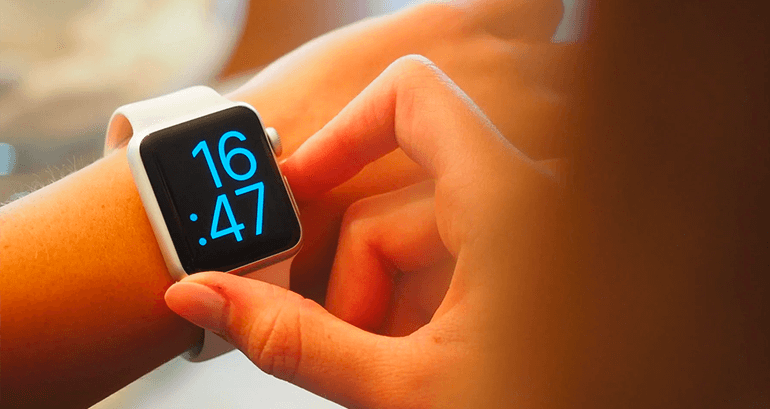Key Points:
1. Losing body fat will require us to periodically feel hungry.
2. Scheduling time to feel hungry each day will allow us to befriend the sensations of hunger rather than feel as we immediately need to get rid of them.
3. This will be absolutely vital for maintaining weight loss after we’ve hit our goals, something most of us don’t think about or plan for.
Estimated reading time: 6-12 minutes
Listen to this article on Spotify!
Earlier this month, we talked about goal setting in the new year. Because so many people’s goals are nutrition-related, today we’re going to discuss an unorthodox method for managing hunger. To reiterate, managing mild to moderate hunger is arguably the key skill for reaching and maintaining one’s desired weight and body composition. This method will help you get better at it.
I call it “Hungry Time.”
Here’s the premise. Each day, you dedicate an hour or two to simply being okay with feeling hungry. I’m going to discuss this more thoroughly in the section called Losing weight requires feeling hungry, but not starving, so scroll down there if you’re feeling like an overeager beaver. For those of you who want to know the “why” behind this method’s efficacy, thank you for joining me for the detour. First stop, a related but neglected area of our basic nutritional skillset.
The U.S. does not actually have a weight loss problem
It has a weight maintenance problem. Tens of millions of people have successfully lost significant amounts of weight, which we can define here as greater than or equal to 15% of their pre-loss bodyweight. For context, that’s a 200 pound person losing 30 pounds or more. Many people have lost far more than that.
However, the statistics regarding successfully maintained weight loss make for grim reading. Nearly 80% of people gain back all the weight they’ve lost (and often more) within a year. If we expand the time horizon to three years, over 90% of people gain it all back. Clearly, the losing isn’t the problem–keeping it off is. But, why?
We try to lose weight too quickly
For starters, most of us try to (and often do) lose weight way too quickly. I’ve railed against the fitness industry’s tendency to completely skew our perceptions of realistic weight loss before, but let’s put some hard data in place.
According to the University of South Florida’s Human Performance and Physique Enhancement Lab, the fastest rate of sustainable weight loss is less than or equal to 1% of bodyweight per week. They further recommend that in order to prioritize fat loss, we aim to lose only 0.5% of bodyweight per week.
As a side note, fat loss is what most of us are talking about when we say we’re trying to lose weight. Nobody really wants to lose 10+ pounds of muscle and water weight. So, keep in mind that when we’re talking about “weight loss,” we usually mean “fat loss” or “reducing our body fat percentage.”
Back to the USF findings, their lab strongly suggests regularly engaging in a practice called a “refeed,” where you deliberately take a break from being in a calorie deficit. Individual preferences vary, but they broadly recommend one “refeed week” per month or 1-2 “refeed days” per week. Refeeds give us a valuable physical and mental break from eating restrictions, which ultimately make “rebound gain” less likely. Despite their substantial benefits, refeeds do slow our overall rate of weight loss, which explains why more people don’t use them.
Now, let’s make all of these recommendations from the USF team more concrete.
Losing 0.5% of bodyweight per week plus one refeed week per month means that for a 200-pound person, the best case scenario for a year’s worth of weight loss would be roughly 35 pounds. I also want to reiterate that this is assuming a “perfect” situation with 100% adherence and no small rebounds, fluctuations, or periods of consistent overindulgence. In short, it’s a totally unrealistic scenario. Losing 25 pounds in a year would be far more realistic, and would still be representative of an incredible amount of hard work and dedication.
And yet, we’re conditioned to expect that we can lose 50 pounds in three months by disingenuous marketing, social media posts, and news stories. On top of that…
Weight maintenance is a skill we’re never taught
At the risk of using an unflattering analogy, most of us approach fat loss like a dog chasing cars. Like Heath Ledger’s Joker said in The Dark Knight, “I’d have no idea what to do if I actually caught one!” In other words, we don’t have a plan for when we reach our goals. When paired with the expectation of fast weight loss (and the methods often used to achieve it) an ensuing rebound is no surprise.
As I’ve written before, common methods for weight loss go something like this. “For the next 60 days, I’m going to give up sugar, alcohol, high-carb snacks, and going out to restaurants.” Let’s say this works, and we lose something like 15-25 pounds in that time frame. The second we return to our previous eating habits, we should expect to steadily regain the weight we just lost.
This is why the industry is moving more towards a philosophy of “diets don’t work.” Personally, it’s why I also prefer the “Owner’s Manual” approach of teaching people to come up with a list of meals, snacks, stress management strategies, ideal restaurant meals, and meal times that will allow them to maintain their weight…before they try to lose a single pound. This ensures we know what to do once we get to where we want to be. The importance of this can’t be understated.
To echo last week’s piece about the parallels between finance and fitness, think of it this way. Losing weight is like making money. Maintaining our post-loss weight is like saving money. Just because you’re good at the former doesn’t mean you’re guaranteed any success with the latter. For example, we often judgmentally ask how professional athletes who have made tens of millions of dollars throughout their careers could possibly go broke. Well, it’s simple. They were never taught how to manage money, and once their temporary state of massively increased earning ends, they’re screwed.
Gaining back all the weight we’ve lost essentially works the same way.
Listen to Sir Isaac
Here’s the reality. Weight loss is stressful for the bodymind. We’re battling millions of years of evolutionary conditioning that kick in to prevent what our lizard brains perceive as impending death by starvation. So, it’s only natural that once restrictions are lifted, our bodies attempt to work in the opposite direction. They want a little insurance for the next time this happens. And what did Newton say? Every action yields an equal and opposite reaction.
In this case, the opposite reaction to losing weight tends to be urges to overeat. Therefore, the more intense the restriction, the more intense the impulses we’re forced to battle. This is why slow, steady weight loss with periodic refeed breaks works so effectively. First, we’re not depriving the body to a degree that yields strong urges to eat everything we can get our hands on. Second, we’re building in weeks or days where we deliberately give the body a little extra food so that the starvation alarm bells don’t sound. To that end, here’s something I wish I’d done a better job of communicating with clients over the years.
Losing weight requires feeling hungry, but not starving
When you’re in a fat loss phase, you’re going to need to feel hungry. This explains why managing or even “befriending” the sensations of mild to moderate hunger is necessary. When we treat hunger as an emergency, or as so unpleasant that it must be gotten rid of immediately, fat loss becomes much more difficult. However, starving ourselves is not the answer. We need to find a manageable sweetspot, where the feelings of hunger are present, but not an all-consuming problem.
Enter: “Hungry Time”
Scheduling intervals where we know we’re going to feel hungry and not do anything about it can help us build this skill. It’s similar to suggestions for scheduling time to scroll through social media or veg out in front of the TV. By consciously planning for habits that could unknowingly influence our behavior, we regain a degree of control.
When should we schedule Hungry Time?
I’ve found this works best before your first meal of the day, between meals, or right before bed. Here are some examples of how it could work when you’re aiming to lose body fat:
- If you normally eat breakfast at 9am, schedule “Hungry Time” from 9-10 a.m.
- If you normally have a mid-afternoon snack between lunch and dinner, schedule “Hungry Time” from 3:30-5 p.m.
- If you normally eat right before bed, schedule hungry time from 8:30-10:30 p.m., then go to sleep.
Practice “Hungry Time” by choosing only the one of these that’s most relevant to your schedule. Then, during “Hungry Time,” drink a large glass of water and find a productive distraction, like answering emails, reading a book, or doing a mobility routine. If you’re feeling extra bold, you could try meditating and checking in with your body to see which thoughts, emotions, and sensations arise while you’re experiencing hunger.
Regardless of what you choose, you’ll see two key benefits from a daily practice of hungry time:
- First, you’ll see that hunger ebbs and flows rather than increasing linearly. This makes you less likely to feel the need to act on it immediately.
- You’ll likely see slow but steady fat loss from decreased snacking.
How do we know if it’s working?
As you’ll recall, I have a complicated relationship with counting calories. However, a consistent caloric deficit is required for fat loss. Luckily, “Hungry Time” provides a simple rule of thumb for determining whether you ended the day in a caloric deficit…without tracking.
Go to bed slightly hungry.
If you do this, you were likely in a deficit for the day. As a word of caution, “slightly” is the key concept here. No more than a 3/10 on your own personal hunger scale. So, aim for something like, “Eh, I could eat, but I’m not going to,” or “I feel a little hungry but nothing I can’t manage.” If your end of day hunger is consistently more intense than that, you may be restricting too much. More is not always better!
With enough practice, you’ll reach a point where you notice feelings of hunger, but don’t feel an immediate need to act on them. It’ll go something like, “Oh, I guess I’m feeling hungry…Do I want to eat now, or will it better serve me to wait an hour or two?”
Mastering “Hungry Time” in this fashion allows us to feel a much greater degree of autonomy over our own body composition, rather than like a victim of our physiological impulses. But, we need to be patient with ourselves as we develop this skill. It does take time. However, when you master it, you’ll be well on your way to being one of the rare few who reaches their nutritional goals for the year rather than giving up by February 1st!
Before you go, I’d love to hear from you! What’s your current relationship with the sensations of hunger like? Does it control you, or do you feel like you’re in charge? If the former, are you going to give “Hungry Time” a shot? Reply to this email and let me know!

